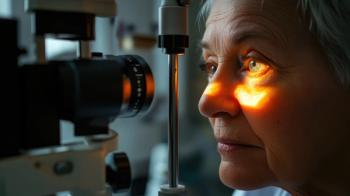
Glaucoma Practices Adapted During COVID-19
A literature review finds that glaucoma care changed for the better during the COVID-19 pandemic.
The COVID-19 pandemic has had a significant on all of healthcare. Glaucoma specialists worldwide, specifically, have implemented major changes in their practices. These include using single diagnostic instrument, new disinfection protocols, reorganizing patient flow to limit those in the waiting room and creating a hybrid model of care, according to a recent
Investigators
“Beyond the pandemic, these developments in care delivery will allow for improved access to services and a reduction in existing disparities within our communities,” they wrote.
COVID-19 presented challenges for glaucoma practices. It remains unclear whether COVID-19 can be transmitted via the ocular surface, investigators said. Practices, however, began using disposable diagnostic instruments, which increased safety compared with reusable instruments that may not have been properly disinfected. One study reviewed by Vinod and Sidoti found that disposable GAT tips used to measure intraocular pressure were cost-effective when compared with the additional expense of disinfecting reusable tips.
Vinod and Sidoti indicated that disposable tip covers are also available for ultrasound pachymeter, which is used to measure the thickness of the cornea.
They also found that glaucoma practices have adopted a hybrid care solution where technicians conducted diagnostic testing and patients then met virtually with glaucoma specialists. But early in the pandemic, ophthalmologists were among the least frequent users of telemedicine. Less than 10% of ophthalmologists used telehealth, compared with 67.7% for endocrinologist and 50% for cardiologists, according to one analysis cited by Vinod and Sidoti. This study analyzed telemedicine use among 16.7 million beneficiaries with commercial insurance and Medicare Advantage over the first 13 weeks of the pandemic.
The hybrid approach, they said, was first used in the United Kingdom 10 years before the pandemic, and during the pandemic, it was adopted in various forms. Early in the pandemic, some practices used drive-through IOP checks followed by virtual visits with glaucoma specialists.
In another study within the Singapore National Eye Center's glaucoma clinic, 40% of patients had stable disease and could benefit through use of the hybrid model. In this study, 94.8% of patients were satisfied with this model.
Vinod and Sidoti said currently the hybrid model is being used by practices as a supplement to in-person visits. “Its future expansion and sustainability will rely on numerous factors including favorable reimbursement structures, ease of use, acceptance by physicians and patients, and further validation of home monitoring devices,” they said.
Newsletter
Get the latest industry news, event updates, and more from Managed healthcare Executive.






















































